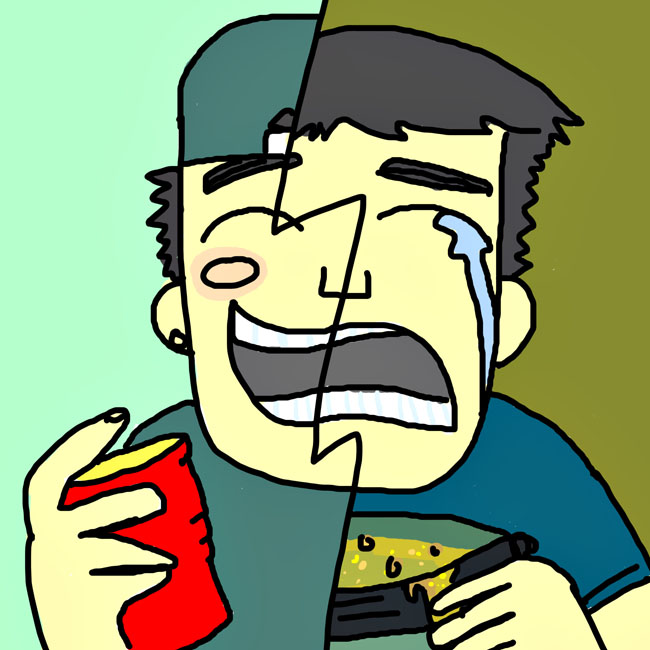After the long week at school following spring break, we’re ready for the weekend. For many of us, that means heading down to Dirty 6th and drinking socially with our friends while meeting new people that may or may not still be cool after we sober up.
But the worst part of the next day may not be who wakes up beside us. No, the worst part will be dealing with the after-effects of alcohol. Unfortunately, the amount of fun we have on Saturday night may be directly related to the amount of misery we feel Sunday morning.
About 75 percent of the population experiences a hangover at least once in their lifetime, and some many more than that. In fact, at any given time, more than 25 percent of college students report having suffered from veisalgia (the scientific term for a hangover) at some point over the previous week. And this has serious consequences.
Hangovers affect our ability to drive (as well as fly a plane, ski and manage a business, according to various studies) even after alcohol is no longer detectable in our blood. Over the course of a year, this costs our country $148 billion in the form of workers taking days off or performing poorly.
So what exactly is a hangover and how can we fight it off?
The short answer is we don’t know and, for the most part, you’ve just got to wait it out.
The long answer, though, is a bit more reassuring.
Part of the reason we don’t know what a hangover is relates to our lack of a clear-cut definition for it. The headaches, shaking, nausea and 44 other potential symptoms are all caused by different effects relating to the way that alcohol dehydrates us, affects our hormone levels and us. It’s important to remember that alcohol is a mild toxin, which explains why your body reacts the way it does to that one last chug on the beer bong.
In order to study something, it helps to quantify it, and there are two systems frequently employed to measure the severity of hangovers: the Hangover Symptom Scale (HSS) and the Acute Hangover Scale (AHS). Unfortunately, there is surprisingly little overlap of the two scales. In fact, half of the AHS symptoms don’t appear on the HSS. To make matters worse, for the conclusion of a paper where a group developed a third system (the Alcohol Hangover Severity Scale, AHSS), the authors admitted that no one system gives a full picture and the best way of getting an accurate reading is to use more than one survey. In short, the lack of a consistent measurement tool makes studying hangovers less precise than we’d like.
As far as studies that have looked into treating veisalgia go, there haven’t been many and the few that exist have either not shown anything, suffered from small sample sizes or both. The common folk remedies, water and bread, aren’t bad ideas, but they’ll work better as preventative measures than cures. Show up to the party hydrated with a full stomach and plenty of sleep and you’ll fare better than if you don’t.
Additionally, choosing your alcoholic beverages wisely will help ensure that you don’t spend the next day miserable. Different drinks have different concentrations of additional toxins known as congeners in them, which are one of the sources of hangovers. Drinks darker in color generally having more congeners than lighter ones, so avoid bourbon, whisky and red wine, and stick to clearer alcohol preparations such as vodka, gin and white wine. Though this won’t completely remove the risk of a hangover, it should lower your odds considerably: A study found that, when given comparable amounts, those who drank bourbon were more than 10 times likely to experience veisalgia than those who drank vodka.
Of course, avoiding alcohol altogether removes the risk entirely, but where’s the fun in that?
Drink responsibly and do what you can to avoid regret the following morning, but if you do need to call in sick after a night when you overindulged, don’t admit to a hangover: Tell your boss that you’re suffering from veisalgia.





















